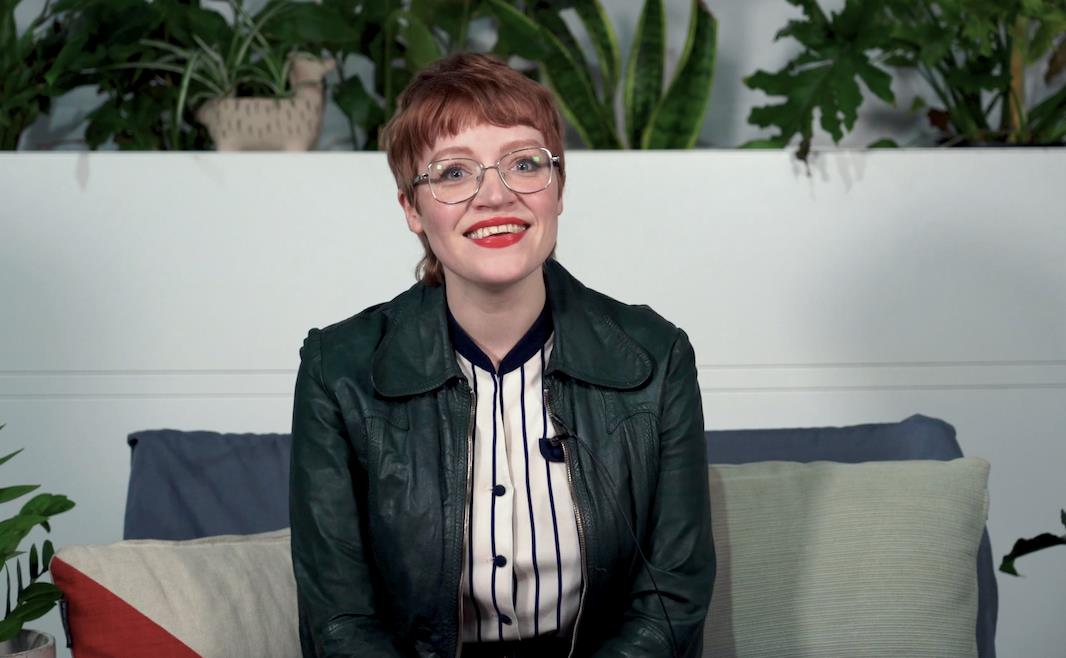Knowing how to write about your art online is an important component for reaching new audiences. In this video, we’ll be looking at how people read online, how to structure your words with personality, and writing specifically for social media.
The video series Artists Essentials Toolkit is a co-production of ArtsHub and Creative Victoria.
Watch: Artists Essentials Toolkit video #4: Promoting your art with social media
How to write about your art online was presented by Jini Maxwell.
We acknowledge the Traditional Owners of the land on which this content was created. We pay our respects to Elders, past and present and future.
Music: ‘Eternally Alone’ by Poppongene, released by Our Golden Friend.
Useful timestamps:
00:31 – A screen is not a book
01:44 – Master the basics
03:00 – Use engaging language
03:50 – Write a great bio
05:08 – Write a great blurb
05:52 – Write for social media
06:39 – Try a style guide
07:08 – Words aren’t everything
OTHER ARTSHUB RESOURCES
How to write an art-wank free artist statement
How to start an online journal
9 writing and reading tips from writers
Video transcript
In this video, we’ll be looking at how to write about your art within an online context. We’ll be looking at how people read online, how to structure your words to be clear but still have some personality, and how to write specifically for social media. We’ll also cover style guides. Oh, and the all important use of emoji.
00:31– A screen is not a book
How many times have you seen a huge, dense chunk of text on a web page and thought ‘ugh, too long?’ You may be happy to read that amount in a book, but on a screen? If you have to scroll and scroll and scroll, well, you and more importantly, your audience, probably won’t. Even though it might be full of useful information.
The first thing to remember is that reading online is completely different to reading in print. We generally scan a web page quickly to figure out if we’ve found the right page, and then we read more closely for more detailed information. Scanning means people read with less accuracy so it’s important you make your message quick, clear and easy.
Break up your content, lay it out clearly using subheadings, so people can find exactly what they’re looking for on a page. Keep your text short, sharp and to the point. Maybe that long scrolling page could be broken up into two or three pages if they are on different topics? Or it might just need a really good edit.
Imagine people landing on your site and asking ‘What’s it about? What’s in it for me?’ Your content should be able to easily answer those two questions.
01:44 – Master the basics
As we mentioned, people read differently online, so try to simplify your message without dumbing it down. That means making it more concise and getting straight to the point. Remember – when in doubt, leave it out!
Look at the layout of your site and keep your text within the word count. An easy read on a web page is 400 words so cutting it back to the essentials is important.
Remember that the most valuable real estate on your site is above the fold – that’s the visible part of the page before you have to start scrolling down. Keep this in mind for mobile screens too which usually allow for less text. Structure your content so the most important message is up front – first on a page but even first in a title and subtitles. People land on your site from many possible angles, so they want to know straight away if this page has the right information for them.
Try to avoid using jargon that most users won’t understand. It feels alienating and can cloud your message.
For example:
Don’t say: ‘Geelong’s wildest auteur slamdunks his esoterica in the depths of the solstice’.
Do say: ‘Invitation to Fred Smith’s exhibition at Smith Gallery on the 18thof June’.
03:00 – Use engaging language
When you’re writing for the web, read it aloud and see how it flows. Does it have a good pace? Does the tone feel right?
An engaging voice talks directly to the audience and puts them in the picture. For example, saying ‘Join my online workshop’ is talking straight to your reader. On the other hand, using ‘I’ is more intimate and gives readers an insight into you and your work – ‘I created an online workshop to share the techniques that are important to me’.
It’s all about that personal brand that we covered in the Getting your art online video.
When it comes to the tone of your voice, you can dial it up or down, depending on the purpose. You can be conversational in a blog post, more factual and clear if you’re promoting an upcoming workshop, and more high energy if you’re promoting a new album release.
03:50 – Write a great bio
Bios are a written snapshot of who you are, what you do and how you do it. They should give a sense of your personality, your capabilities and your achievements.
You would typically fit your bio into the ‘About’ section of your website, so keep it concise and engaging, you can even use humour if it suits your style. Introduce yourself, explain what you do and mention some high-level accomplishments. There’s no need to list every single exhibition you’ve ever been in here. Your bio isn’t your CV – it’s the story of who you are and what you’ve done. You can put your CV in another section of your website or on LinkedIn.
Choose whether you want to write about yourself in the first person or the third person. Third person bios are easier for other people to use if they want to feature you on their site, but first person bios have a lighter, more personable tone of voice, which we discussed earlier.
Have a few versions of your bio so you can easily slot them into different social media formats – a quick one-liner for Instagram and Twitter, a more detailed, work-oriented one for LinkedIn. Most artists write different length bios depending on where they will appear, but if you’re writing online, try to keep it short and include the most important information only.
05:08 – Write a great blurb
Blurbs are a way to describe your art. If you’re a writer, it’s the teaser on the back of a book. If you’re a visual artist, it could be the content that appears on an online catalogue, explaining your inspirations and influences.
When you’re writing a blurb about your own work, keep the audience in mind. If it’s intended for a general audience, keep it clear and explanatory, and save the art-speak for a different platform.
Once you’ve written your blurb, write a clear call to action. What’s a call to action? It’s that final link that should inspire someone to click on it. It’s the ‘download the trailer’. It’s the ‘Buy the book’. It’s the ‘Play the new track’. Make the call to action clear and enticing.
05:52 – Write for social media
Not all social media platforms present text the same way, just as users interact with social media in different ways. You can craft the same message but present it to make the most out of the different platforms. Check out our previous videos Getting your art noticed online and Promoting your art with Social Media for extra tips. Don’t forget that social media favours posts which have images or videos instead of just plain text.
While platforms have maximum character counts, that doesn’t mean you need to use them all. Here’s a quick guide to the ideal length of a post – small for Twitter, medium for Instagram, larger for Facebook – and style the message to fit the format without being repetitious.
06:39 – Try a style guide
When you’re writing online content, it’s good to be aware of certain rules and protocols. The Victorian Government Digital Standards are a great reference. They cover everything from punctuation to non-discriminatory language and the law relating to publication.
The Australia Council for the Arts also has a set of protocols around working with Indigenous artists.
Have a look at these resources to get more familiar with style guides.
07:08 – Words aren’t everything
Of course, the internet has given us a whole other language that doesn’t even need words. A witty emoji or a cheeky meme can paint a thousand words – or likes – and can be a clever way of indicating subtext. Some emojis have multiple meanings, so just check first before you use them.
And if you find you have a lot to say but get yourself tied up in wordy knots, using a text card on Twitter or Instagram can get your content out there in an efficient, snappy way.
OUTRO
So now you know how to write about your art in the best way for an audience on the web. So go forth and go viral!





